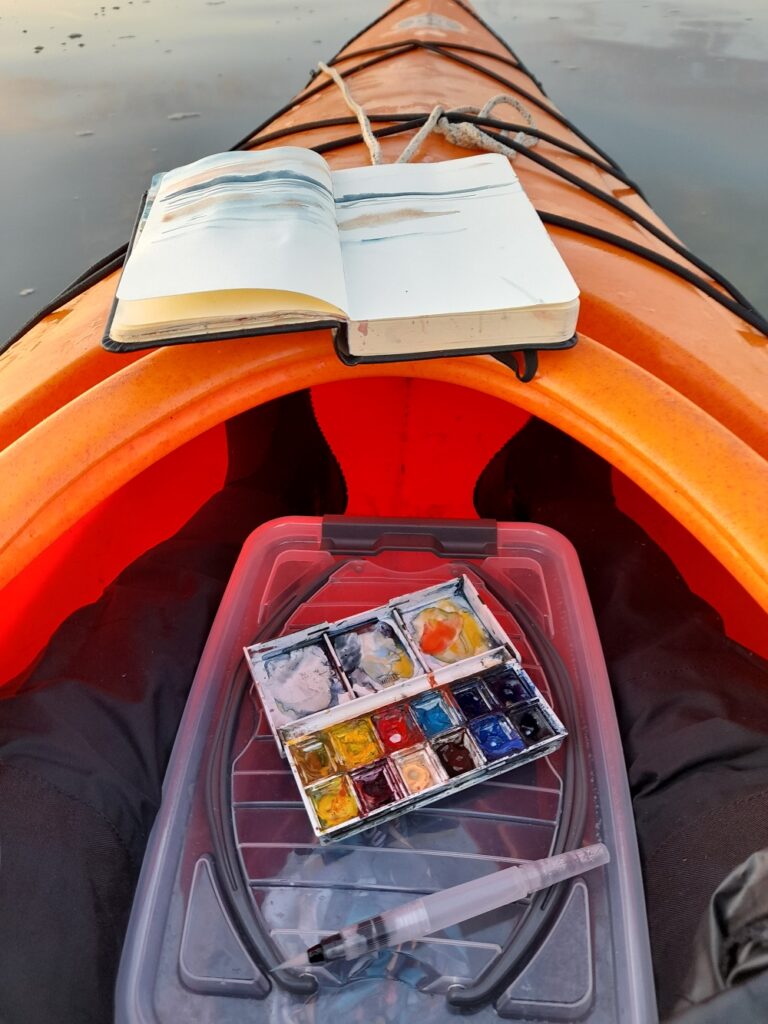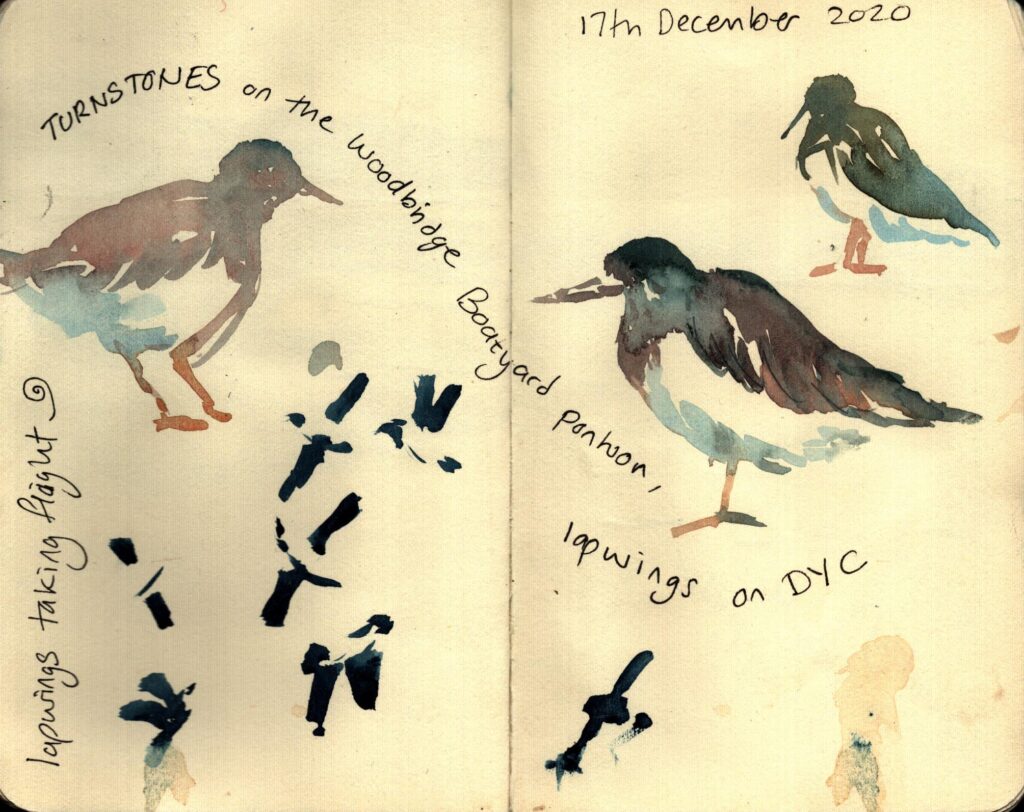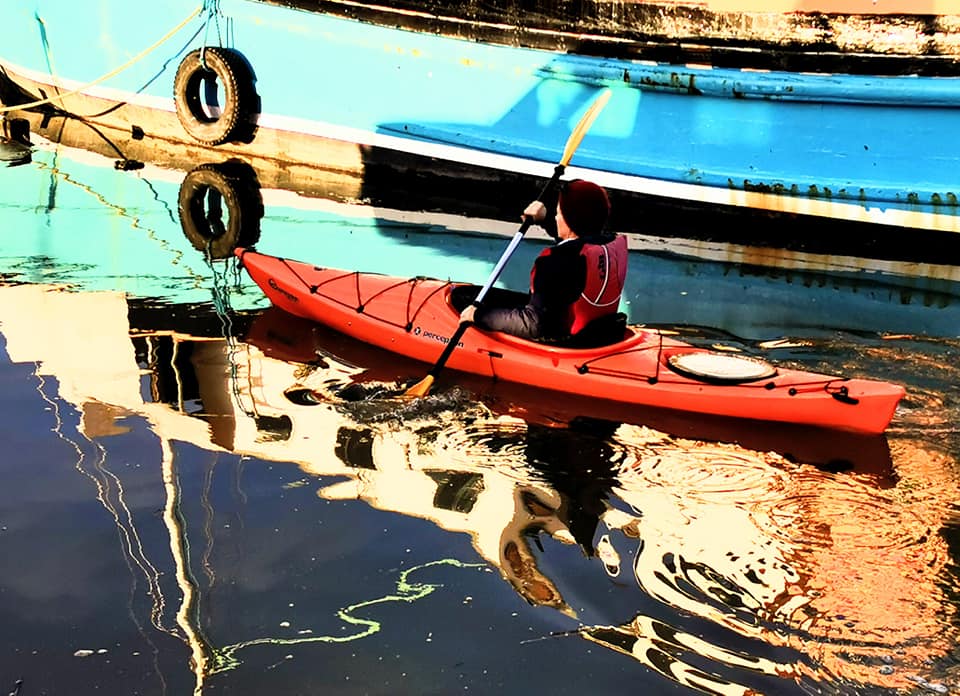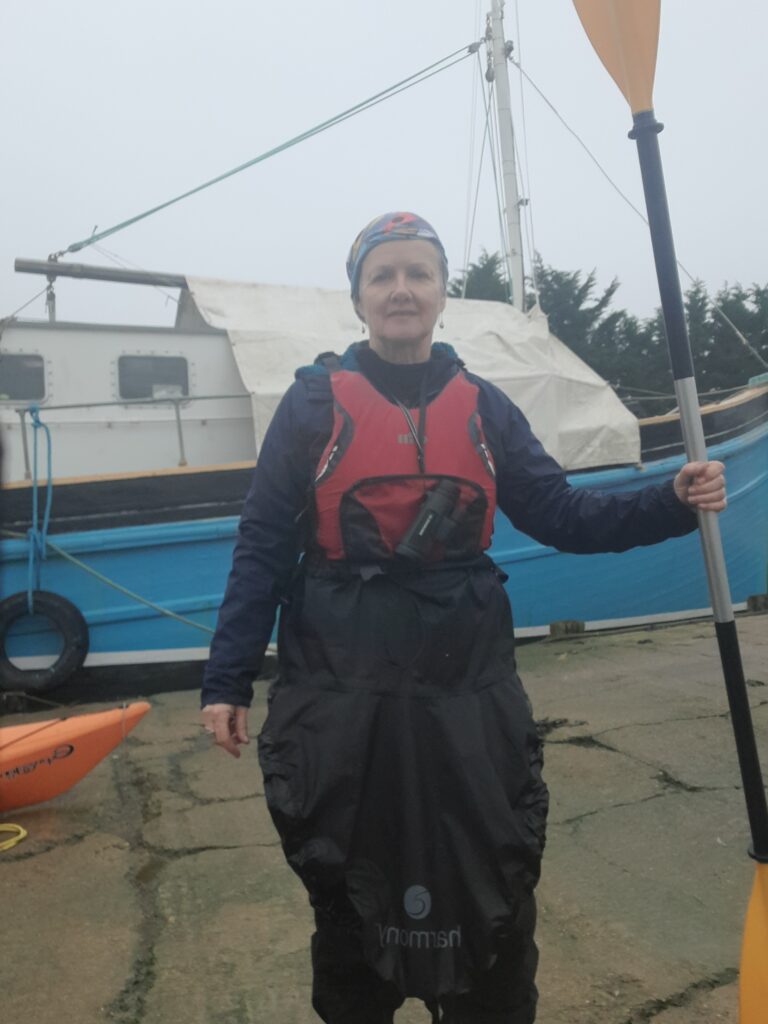Paddles and paintboxes
The postponement of my Antarctic trip until later this year is no bad thing. It gives me time to do some research and reading, improve my wildlife (particularly bird) sketching skills and visit the Scott Polar Research Institute when circumstances allow. They have an impressive museum that I’m itching to visit. https://www.spri.cam.ac.uk/museum/
There are already so many connections and threads to follow. I have been given, loaned, and bought some fascinating books, including Kathleen Scott’s biography, artist Brian Pearson’s exceptional book about the albatross and a biography of naturalist and artist Edward Wilson who died on Scott’s expedition to the Pole but left a legacy of meticulous sketches and watercolours.
I’m so glad not to have been a travelling artist in Wilson’s day. On his first expedition to Antarctica in 1910, he frequently complains about the amount of time he has to spend skinning birds and preparing specimens:
‘…… putting in an hour or now and then to make a watercolour, then turning to the skinning of penguins because the bodies are wanted for dinner, then flensing seal skins and cleansing the meat off skulls and skeletons and a dozen other things’.
On Macquarie Island Wilson reports: ‘At the very spot where we landed, there lay a big brown seal fast asleep. Out came cameras, hammers, guns, rifles, mauser pistols, clubs, and sketch books… we killed one more and skinned them both and took them on board’.
I am truly grateful that I don’t need rifle and skinning knife in my artist’s kit. The development of lens technology in both cameras and binoculars has made close up observation of wildlife a much less messy business!
Wilson died in 1912 during Scott’s ill-fated expedition to the South Pole. Bruce Pearson is still very much with us and I recommend a visit to his website –https://www.brucepearson.net/books-films/books/. Bruce learned to capture albatrosses in the 1970s when working for conservation organisations in South Georgia, not to kill them but to ring them so that their ocean journeys could be tracked and the reasons for their tragic decline finally discovered. I thoroughly recommend ‘Troubled Waters’, published by Langford Press and available from Bruce’s website.
What fascinates me is how much the job of observational artist has changed over the century. By fair means or foul it’s important to get up close to a subject if you want to study and understand it. That’s why, if I call myself a marine artist, I try to spend so much time as possible at sea (that’s my excuse and I’m sticking to it!). In Wilson’s day, drawing was, alongside collecting specimens, an essential part of scientific study – the only way to record what a newly discovered species looked like, along with its lifestyle and habitat. In the camera-rich 21st century this is no longer needed, so when I travel with a sketchbook I can choose my reasons, my subjects, the story I want to tell. Today’s wildlife artists, like Bruce Pearson, are increasingly using art to bring the message of conservation to a wider audience. Drawing something tends to make you value it more, and hopefully that feeling is contagious.
I took a break over Christmas and New Year so I had time to sketch outdoors (apologies to those of you who’ve put in online orders, they’re now on the way!). The weather has been bitterly cold, but the tides have been high during daylight hours, which only happens every other week at this time of year. Most days at around two hours before high water I launched my kayak and paddled off for a couple of hours, combining some good exercise with bird watching, enjoying the wide open spaces, and sketching.
Being out on the river is the best kind of social distancing! Some days last week it was tempting not to bother, but it was always worth pulling on the layers and getting out there. There’s no excuse, with the river running past my door and I reckon it’s good to get some practice in at sketching with cold hands.
If you’re interested in learning to sketch, I’ve got a new-ish facebook page on the go called ‘Learn to sketch with Claudia Myatt’. There will be tips and tutorials, links to videos and details of online lessons when I get them going. Most sensible people sketch from dry land, and that’s challenging enough! I’d love to hear from you, see your sketches and tips for working on the spot. Sketching, or any creative act, is such a good way to relieve stress and focus on the positive, so what better time to start?

Thanks to all of you who took the trouble to order from my website on the run up to Christmas; in the absence of my usual Christmas outlets your support was much appreciated and when I was extra busy and lost the plot you were very patient. When you work on your own you can’t blame the post room staff when the wrong label finds its way onto the wrong package!
Stay positive, and stay inspired.






I am embarrassed to admit that I have never been to the Scott Polar Institute,
having passed it several times a week all my school days.